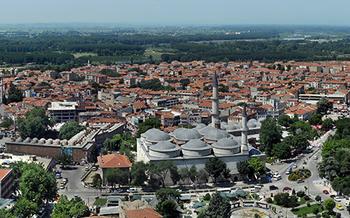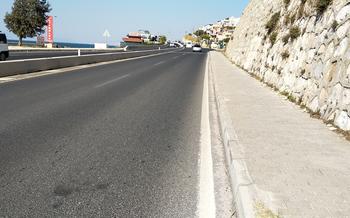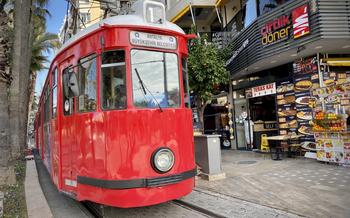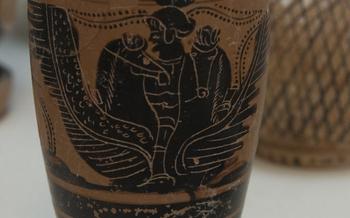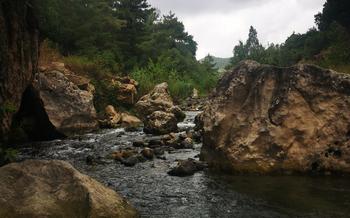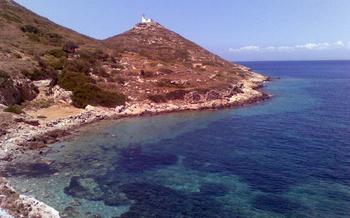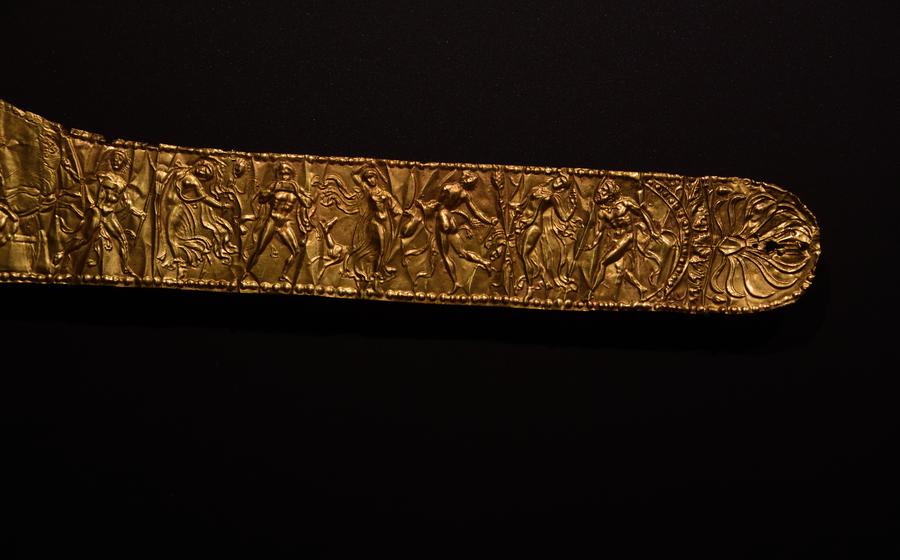
Datça Archaeology Museum
- Datça Archaeology Museum: Unveiling the Treasures of Datça's Past
- Journey Through Time: Exploring the Museum's Exhibits
- Highlights of the Museum Collection
- A Glimpse into Ancient Datça: The Hellenistic Period
- Roman and Byzantine Legacy: Exploring Their Impact
- Medieval Datça: A Thriving Center of Trade
- Ottoman Era: A Glimpse into the Past
- Datça's Rich Underwater Heritage: A Sunken Treasure Trove
- Interactive Experiences: Bringing History to Life
- Temporary Exhibitions: A Window to Diverse Cultures
- Research and Conservation: Preserving Datça's Legacy
- Educational Programs: Inspiring Future Generations
- Community Involvement: A Museum for the People
- Accessibility and Inclusivity: Welcoming All Visitors
- Insider Tip: Hidden Gems of the Museum
Datça Archaeology Museum: Unveiling the Treasures of Datça's Past
In the heart of the picturesque town of Datça, nestled amidst the vibrant colors and scents of the Aegean coast, lies a treasure trove of history and culture waiting to be explored - the Datça Archaeology Museum. This remarkable institution serves as a guardian of the town's rich and storied past, inviting visitors on a journey through time to uncover the hidden wonders of Datça's ancient civilizations.
Standing as a testament to the region's cultural heritage, the museum's impressive collection boasts artifacts from various historical periods, providing a glimpse into the lives and achievements of the diverse civilizations that have shaped Datça's identity. Its strategic location, at the crossroads of the Mediterranean and Aegean Seas, has played a pivotal role in shaping the town's history, making it a melting pot of cultures and a witness to countless historical events.
The museum's architectural design is a testament to its dedication to preserving the past while embracing modernity. Its spacious galleries, bathed in natural light, create an inviting atmosphere, while state-of-the-art display techniques and interactive exhibits bring the ancient world to life. As visitors step through its doors, they are transported to a realm where history and culture intertwine, offering a unique and immersive experience.
Journey Through Time: Exploring the Museum's Exhibits
The Datça Archaeology Museum takes visitors on a chronological journey through the region's rich history, showcasing artifacts from various periods. The exhibits are arranged in a logical progression, allowing visitors to trace the evolution of Datça from its early beginnings to its emergence as a significant cultural and commercial center.
The museum's collection includes objects from the Neolithic, Chalcolithic, Bronze, and Iron Ages, offering a glimpse into the lives of the region's earliest inhabitants. Visitors can admire intricate pottery, stone tools, and jewelry that provide insights into their daily lives, artistic expressions, and technological advancements.
The Hellenistic period, which marked a significant era in Datça's history, is well-represented in the museum's exhibits. Artifacts from this period include sculptures, coins, and ceramics that showcase the influence of Greek culture and the city's role as a vital trading hub.
The Roman and Byzantine periods left their mark on Datça, and the museum's collection includes remnants of their rule. Visitors can explore architectural fragments, mosaics, and pottery that speak to the city's transformation under Roman and Byzantine influence.
The medieval period saw Datça flourish as a thriving center of trade, and the museum's exhibits reflect this prosperity. Artifacts from this era include glassware, metalwork, and ceramics that demonstrate the city's commercial connections with neighboring regions and its role in maritime activities.
Highlights of the Museum Collection
The Datça Archaeology Museum houses a remarkable collection of artifacts that tell the story of the region's rich history and cultural heritage. Visitors can marvel at rare and unique pieces, including ancient jewelry, pottery, sculptures, and coins. These artifacts showcase the exceptional craftsmanship and artistry of the region's past inhabitants.
A significant highlight of the museum's collection is the array of exhibits related to Datça's maritime history. The museum houses a collection of anchors, navigational instruments, and shipwrecked artifacts that provide insight into the city's role as a crucial trading hub in the Mediterranean.
The museum also features exhibits that reflect the cultural diversity of the region throughout history. Visitors can explore artifacts influenced by Greek, Roman, Byzantine, and Ottoman cultures, highlighting the region's position as a crossroads of civilizations. These exhibits offer a glimpse into the diverse cultural influences that have shaped Datça's unique identity.
A Glimpse into Ancient Datça: The Hellenistic Period
Datça's rich history extends back to the Hellenistic period, a time when the city flourished as a vital trading hub. During this era, Datça became a melting pot of cultures, with influences from Greece, Persia, and Anatolia blending to create a unique and vibrant society.
The museum's Hellenistic collection offers a glimpse into this fascinating period. Among the highlights are intricate pottery, elegant jewelry, and bronze artifacts that showcase the exceptional craftsmanship of the time. Visitors can also admire impressive sculptures and architectural fragments that provide insights into the city's Hellenistic heritage.
One of the most significant aspects of Datça's Hellenistic period was its role as a trading center. The city's strategic location on the Aegean coast made it a natural hub for the exchange of goods between East and West. This trade brought wealth and prosperity to Datça, allowing for the development of impressive infrastructure and public works.
The Hellenistic period also saw the rise of Datça as a cultural and intellectual center. The city became home to a renowned school of philosophy and attracted scholars and artists from across the region. This vibrant intellectual atmosphere contributed to Datça's reputation as a center of learning and enlightenment.
By exploring the Hellenistic exhibits at the Datça Archaeology Museum, visitors can gain a deeper understanding of this pivotal period in the city's history. The artifacts on display offer a glimpse into the cultural, economic, and intellectual achievements of Datça's Hellenistic past, showcasing the city's role as a thriving hub of commerce and a center of cultural exchange.
Roman and Byzantine Legacy: Exploring Their Impact
As you wander through the halls dedicated to the Roman and Byzantine periods, you'll encounter artifacts that vividly illustrate the profound influence these empires had on Datça. Marvel at well-preserved mosaics that once adorned the floors of opulent villas, intricate pottery that reflects the region's flourishing trade networks, and bronze and marble sculptures that showcase the artistic prowess of the era.
Beyond these tangible remains, the museum also sheds light on the urban planning and architectural achievements of the Romans and Byzantines. Discover how they transformed Datça into a thriving city with well-organized streets, public baths, and impressive fortifications. Learn about the introduction of Christianity and its impact on the city's religious landscape, as evidenced by the ruins of early churches and monasteries.
This chapter of the museum's narrative highlights the pivotal role Datça played as a cultural and commercial hub during the Roman and Byzantine eras. Through the artifacts and information presented, visitors gain a deep appreciation for the enduring legacy of these powerful empires and their lasting impact on the region.
Medieval Datça: A Thriving Center of Trade
During the medieval period, Datça flourished as a thriving center of trade, benefiting from its strategic location and natural harbor. Artifacts from this era showcase the city's prosperity and extensive commercial networks. Among the notable exhibits are coins, pottery, and glassware, indicating trade with neighboring regions such as the Byzantine Empire, the Italian city-states, and the Mamluk Sultanate of Egypt.
Evidence of Datça's maritime activities during this period includes anchors, ship fittings, and navigational instruments. The city's shipyards were renowned for constructing sturdy vessels that traversed the Mediterranean Sea, carrying goods and passengers between distant ports. The museum also displays artifacts related to shipbuilding techniques and the tools used by skilled craftsmen.
The cultural influences that shaped medieval Datça are reflected in its architecture, art, and cuisine. Exhibits showcasing ceramics, textiles, and jewelry reveal the fusion of Byzantine, Islamic, and Western European styles. The city's cosmopolitan atmosphere attracted merchants, artisans, and scholars from diverse backgrounds, contributing to a vibrant cultural exchange.
This chapter of Datça's history highlights the city's role as a thriving commercial hub, connecting East and West through maritime trade. The artifacts on display offer a glimpse into the bustling marketplaces, busy shipyards, and vibrant cultural interactions that characterized medieval Datça.
Ottoman Era: A Glimpse into the Past
The Datça Archaeology Museum offers a glimpse into the Ottoman era, which had a significant influence on the region. Artifacts from this period showcase the diverse cultural heritage of Datça, with Islamic art and traditions playing a prominent role. One of the highlights is a collection of Ottoman ceramics, featuring intricate designs and vibrant colors. Visitors can also explore the architectural heritage of the Ottoman period through models and photographs of mosques, bathhouses, and other structures that shaped the cityscape. The museum provides insights into the role of Datça in the Ottoman maritime network, highlighting its strategic importance as a port town. By shedding light on this era, the museum helps visitors understand the rich tapestry of cultures that have shaped Datça's history.
Datça's Rich Underwater Heritage: A Sunken Treasure Trove
Datça's allure extends beyond its land-based treasures. Beneath the crystal-clear waters that surround the peninsula lies a wealth of submerged history, making it a haven for underwater archaeology enthusiasts. The Datça Archaeology Museum proudly showcases exhibits that unveil the secrets of this hidden realm.
Ancient Shipwrecks and Their Significance
The museum houses a captivating collection of artifacts recovered from shipwrecks that have occurred over centuries in the waters around Datça. These shipwrecks, often laden with precious cargo, provide invaluable insights into ancient maritime trade routes and the lives of seafarers from various civilizations.
Artifacts Recovered from Underwater Excavations
The museum's exhibits showcase a diverse array of artifacts salvaged from underwater excavations. From amphorae and pottery shards to anchors and navigational tools, these relics offer tangible evidence of the bustling maritime activity that once took place in this region.
Importance of Preserving Marine Cultural Heritage
The museum plays a crucial role in raising awareness about the significance of preserving marine cultural heritage. Through its exhibits and educational programs, the museum emphasizes the need to protect and study these underwater treasures, which hold immense historical and cultural value.
Interactive Experiences: Bringing History to Life
The Datça Archaeology Museum takes history beyond the confines of glass cases and dusty displays. It offers visitors a range of interactive experiences that bring the past to life and make learning an immersive adventure.
Virtual Reality Tours and 3D Models: Step into the shoes of an ancient explorer with virtual reality tours that transport you back in time. Navigate through the streets of ancient Datça as it would have looked centuries ago, and explore the ruins of long-lost civilizations. 3D models of artifacts provide a tactile and visual experience, allowing visitors to examine intricate details and gain a deeper understanding of their significance.
Multimedia Presentations and Audio Guides: Multimedia presentations bring history to life with captivating visuals, animations, and sound effects. They offer insights into the daily lives, customs, and beliefs of ancient civilizations. Audio guides, available in multiple languages, provide a personalized narrative as you wander through the museum, ensuring you don't miss any important details.
Educational Programs and Workshops: The museum offers an array of educational programs and workshops designed to engage visitors of all ages. Hands-on activities like pottery making, coin minting, and artifact cleaning allow participants to experience ancient crafts and techniques firsthand. Workshops on archaeology and history provide deeper insights into the field, fostering a sense of curiosity and wonder.
Temporary Exhibitions: A Window to Diverse Cultures
The Datça Archaeology Museum regularly hosts temporary exhibitions that showcase diverse aspects of history, culture, and art. These exhibitions offer visitors a unique opportunity to explore different themes, engage with contemporary perspectives, and appreciate the richness of human expression.
Collaborations with other museums and cultural institutions allow the museum to present a wide range of exhibits, from ancient artifacts to modern masterpieces. These collaborations foster cultural exchange and bring new perspectives to Datça's cultural landscape.
Temporary exhibitions often focus on contemporary art, photography, and works by local artists. These exhibitions provide a platform for talented individuals to showcase their creativity, share their stories, and connect with the local community.
By presenting temporary exhibitions, the Datça Archaeology Museum creates a dynamic and ever-changing environment that encourages visitors to return and discover new treasures. These exhibitions offer a window to diverse cultures, promote artistic expression, and contribute to the vibrant cultural fabric of Datça.
Research and Conservation: Preserving Datça's Legacy
The Datça Archaeology Museum is not merely a repository of artifacts; it is also a vibrant center for ongoing research and conservation efforts. Archaeologists and researchers continuously engage in excavations and studies to uncover new insights into Datça's rich past. Their work contributes to expanding our understanding of the region's history and culture.
The museum actively collaborates with universities and research institutions, fostering an environment of knowledge sharing and collaboration. These partnerships facilitate access to cutting-edge research methodologies and expertise, ensuring that the museum's collection and exhibits are informed by the latest archaeological discoveries.
Conservation plays a crucial role in preserving Datça's cultural heritage. The museum's conservators work tirelessly to restore and protect artifacts, employing specialized techniques to ensure their longevity. Their efforts extend beyond the museum's walls, as they also provide guidance and training to local communities on preserving their cultural heritage.
The museum's commitment to research and conservation extends beyond its own collection. It actively supports and promotes archaeological excavations and research projects in the Datça region. By collaborating with local and international experts, the museum contributes to the preservation and dissemination of knowledge about Datça's rich cultural heritage.
Educational Programs: Inspiring Future Generations
The Datça Archaeology Museum takes its educational mission seriously, recognizing that the future of cultural heritage lies in the hands of the younger generation. To this end, the museum has developed a range of educational programs tailored to students and educators. Guided tours and workshops introduce students to the wonders of archaeology and the rich history of Datça. These interactive sessions bring history to life, fostering a sense of curiosity and exploration among young minds.
School programs focusing on local history and archaeology provide an immersive learning experience for students of all ages. Expert educators lead these programs, using the museum's artifacts and exhibits as teaching tools. Through hands-on activities and interactive displays, students gain a deeper understanding of the past, developing critical thinking skills and a passion for history.
The museum also offers a variety of educational resources for teachers, including lesson plans, activity sheets, and multimedia presentations. These resources help educators incorporate local history and archaeology into their classrooms, fostering a sense of place and cultural identity among their students.
By engaging young people through educational programs, the Datça Archaeology Museum plays a vital role in inspiring the next generation of archaeologists, historians, and cultural enthusiasts. These programs cultivate a love for learning and a deep appreciation for the rich heritage of Datça, ensuring that the legacy of the past continues to inspire future generations.
Community Involvement: A Museum for the People
The Datça Archaeology Museum embraces the principle of "a museum for the people" by actively engaging with local communities and organizations. Through collaborative initiatives, the museum aims to foster a sense of ownership and belonging among the residents. Community outreach programs and events are organized to promote local history and culture, creating a platform for storytelling and exhibitions that celebrate the region's rich heritage. By encouraging community participation in preserving cultural heritage, the museum fosters a deeper connection between the people of Datça and their past, ensuring that the legacy of this ancient land continues to thrive for generations to come.
Accessibility and Inclusivity: Welcoming All Visitors
The Datça Archaeology Museum is committed to creating an inclusive and welcoming environment for all visitors. The museum is equipped with accessible facilities for visitors with disabilities, including ramps, elevators, and wheelchair-accessible restrooms. Multilingual signage and audio guides are available to assist visitors from different linguistic backgrounds. The museum also offers programs and events designed for diverse audiences, including guided tours in sign language and educational workshops for visitors with cognitive impairments. Through these initiatives, the museum ensures that everyone has the opportunity to experience and appreciate the rich cultural heritage of Datça.
Insider Tip: Hidden Gems of the Museum
Beyond the main exhibits, the Datça Archaeology Museum holds hidden treasures waiting to be discovered. Ask the museum staff about lesser-known artifacts or areas that are typically overlooked. These hidden gems often reveal fascinating stories and provide a deeper understanding of Datça's past. Embark on a behind-the-scenes tour to explore the museum's collections up close, gaining exclusive insights into the preservation and restoration processes. Capture the essence of your visit through photography, but remember to respect the museum's guidelines and avoid using flash to protect the artifacts. After your visit, venture into Datça's vibrant streets to discover other cultural attractions, such as the picturesque harbor, traditional markets, and charming art galleries. Immerse yourself in the town's rich history and culture, creating lasting memories that will transport you back to the wonders of ancient Datça.



